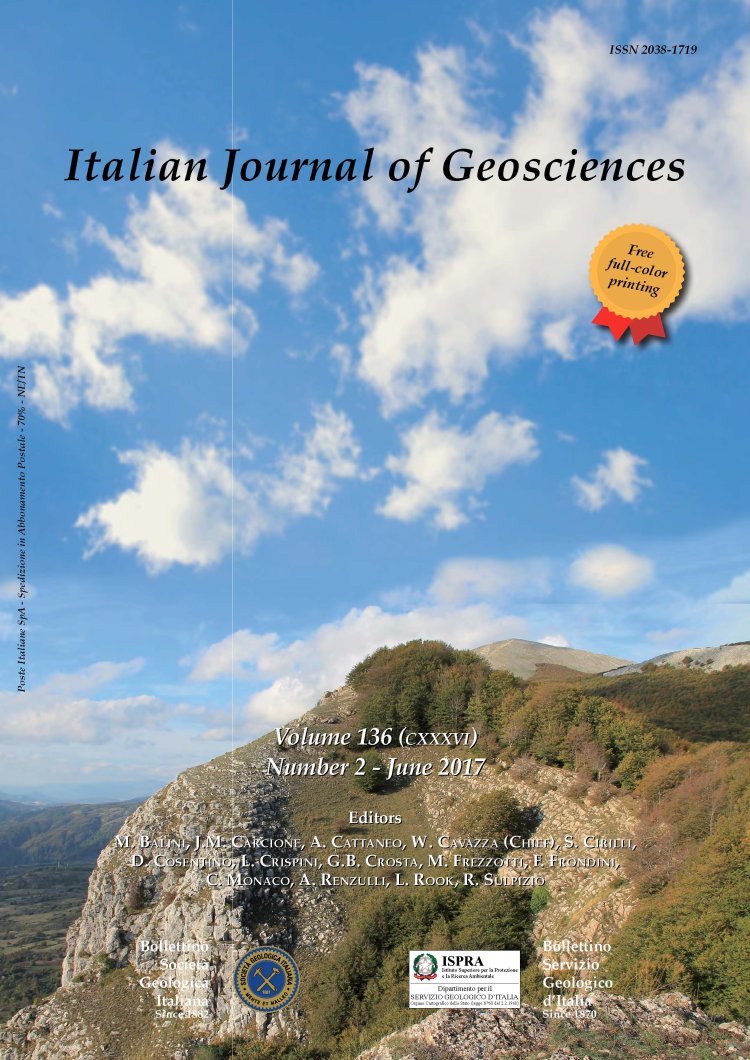
New insights on the tectonics of the Lampedusa Plateau from the integration of offshore, on-land and space geodetic data
Melania Meccariello (1), Luigi Ferranti (1)(*), Giovanni Barreca (2)(*) & Mimmo Palano (3)
(1) Dipartimento di Scienze della Terra, dell'Ambiente e delle Risorse (DiSTAR), Università di Napoli "Federico II", Largo S. Marcellino 10, 80138 Napoli, Italy. Corresponding author e-mail: melania.meccariello@unina.it.
(2) Dipartimento di Scienze Biologiche, Geologiche e Ambientali, Sezione di Scienze della Terra, Università di Catania, Corso Italia 57, 95129 Catania, Italy.
(3) Istituto Nazionale di Geofisica e Vulcanologia, Osservatorio Etneo, Sezione di Catania, Piazza Roma 2, 95125 Catania, Italy.
(*) CRUST, Centro inteRUniversitario per l'analisi Sismotettonica Tridimensionale con applicazioni territoriali.
Volume: 136 (2017) f.2
Pages: 206-219
Abstract
Joint analysis of multichannel seismic reflection profiles calibrated with well-logs across the northern part of the Lampedusa Plateau (central sector of the Pelagian Block, Sicily Channel), of structural data collected on Lampedusa island, and of GNSS geodetic velocities of sites on the islands and on the northern shore of the Channel, suggests that this part of the plateau forms an anticlinorium (Lampedusa Plateau Anticlinorium, LPA). The LPA developed during Paleogene to Early Miocene intraplate contraction followed by Miocene to current strike-slip deformation. It is formed by WNW-ESE striking highs and lows, which have an ~20 km average wavelength and culminate at the Lampione-Lampedusa High. These broad folds are bounded by high-angle faults with a reverse component of displacement, which cut Eocene to Lower Pliocene strata offshore, and Late Miocene strata on Lampedusa. Extensional faults, that have a bathymetric expression and are responsible for marked stratal tilting due to their listric geometry, are only found to the NE of the island and are associated to the rifting that affected the central part of the Sicily Channel in the Pliocene-Quaternary. Seismic reflection profiles show that normal fault activity peaked during the middle part of the Pliocene and strongly diminished afterward. Appraisal of recent plate motion reconstructions and of published and new structural data offshore and on-land suggest that the main growth phase of the LPA occurred during (Late Cretaceous?) Paleocene-Early Miocene ~N-S convergence between Nubia and Eurasia and associated intraplate shortening. Starting from Early Miocene, likely in response to a CCW rotation of the plate convergence direction, strike-slip deformation occurred with a ~NW-SE shortening axis and ~NE-SW extension axis. During this time span the previous contractional structures were locally reactivated in transpression. The two different strain regimes, extensional and transpressional that established since Miocene NE and W to NW of Lampedusa, respectively, still persist today as documented by geodetic velocities.
Keywords
Get Full Text